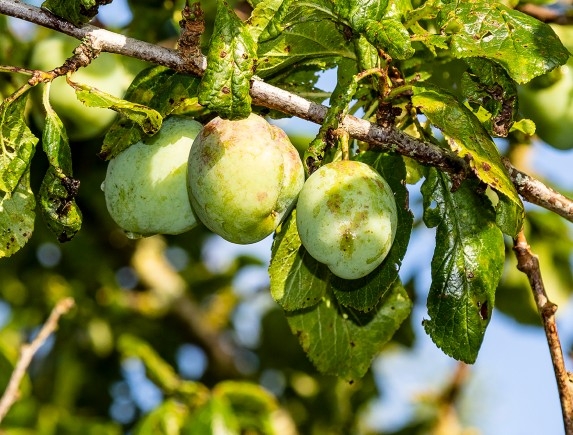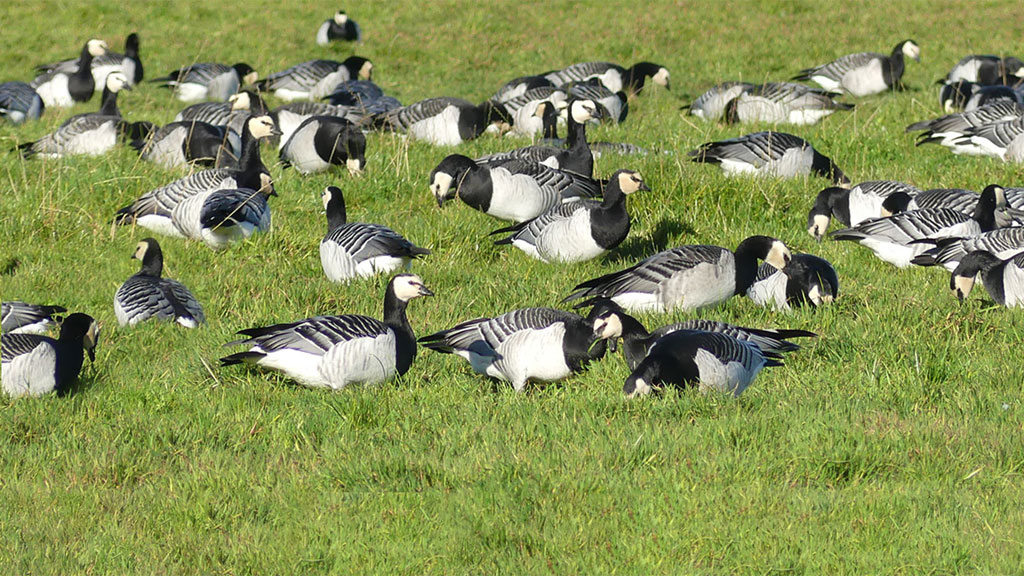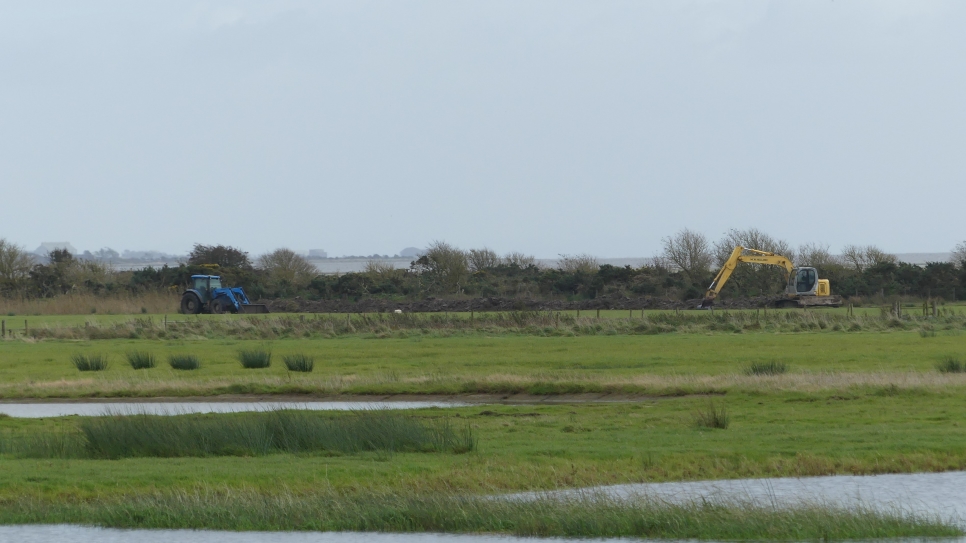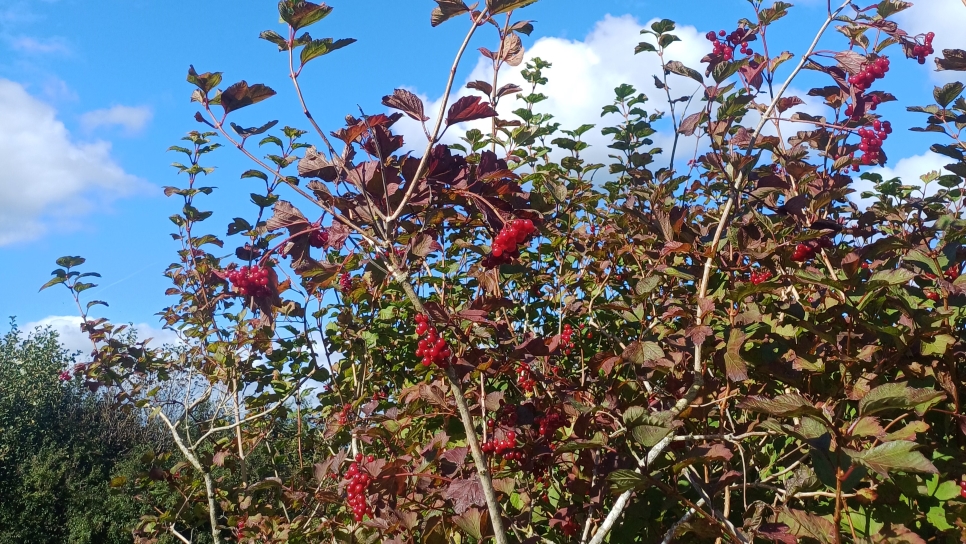Autumn fruits
Find out the variety of autumn fruits that are appearing around the reserve
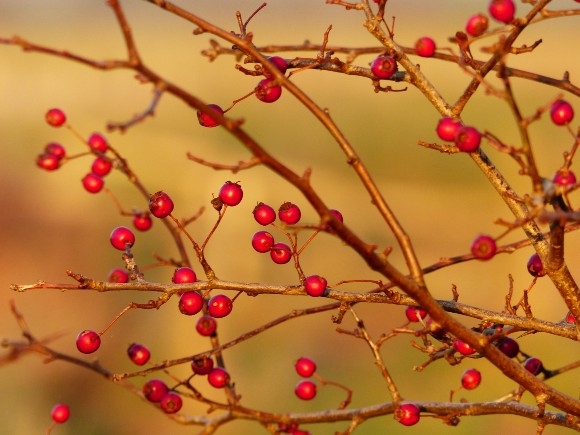
As we get to the end of summer, it is starting to feel autumnal at Caerlaverock, with mist in the mornings and the nights starting to draw in! Around the reserve the leaves are beginning to turn and many attractive fruits are starting to appear!
Elderberry
Elderberries are black in colour and are eaten by a variety of birds, but blackcaps in particular love them! Mammals such as rabbits and badgers also eat them, and are fundamental to the spread of the plant through its seeds. Elders are often seen growing near badger setts and rabbit warrens!
Sloes
Blackthorn produces ‘sloes’ which are a stoned fruit, known as a ‘drupe’. Dark blue/purple in colour, they have a white powdery coating which is a type of yeast fungus. They generally ripen from October to November after the first frosts of the winter and are best known for their use in making sloe gin but in the past they have also been used to dye linen a beautiful blue colour.
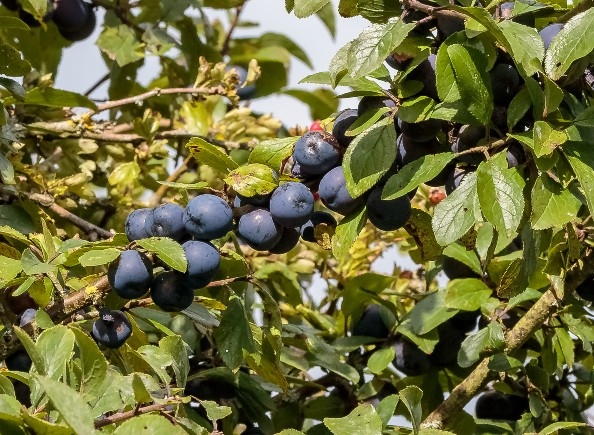
Blackberries
Blackberries are made up of of lots of small ‘drupelets, each with a seed inside. The stem goes right up inside the fruit too, unlike a raspberry. They are the fruit of ‘brambles’ which are full of thorns and can often take over in a garden! The dark blue colour indicates this fruit is full of antioxidants and it also contains Vitamin K! Consumption of blackberries are said to help you look younger, by tightening the skin, and also helps your brain by improving memory and clearing your head!
Guelder rose berries
These berries are bright red and translucent, and look stunning in the hedgerows down the avenue. The berries are 'drupes' and hang in bunches. Waxwings particularly love to eat the berries! The red juice can also be used in dyeing.
Haws
The fruit of hawthorn are completely different to blackthorn fruit and are a stunning red colour. See in the hedgerows down all the avenues at Caerlaverock, they are a lovely sight in the warm golden sunlight of an autumn morning! The seeds are inside the fruit flesh and have a tough outside casing, meaning the Haws are a type of fruit called a ‘pome’. Waxwings and thrushes such as songthrush, mistle thrush, blackbirds, redwings and fieldfares love to eat haws!
Rowan
The rowan tree is significant in Scotland and they are
planted in gardens to keep away evil spirits. Its Celtic name 'fid na ndruad', meaning
‘wizards' tree’. The berries are ‘pomes’. They are ripe from August to October and
are eaten by up to 60 different species of birds.
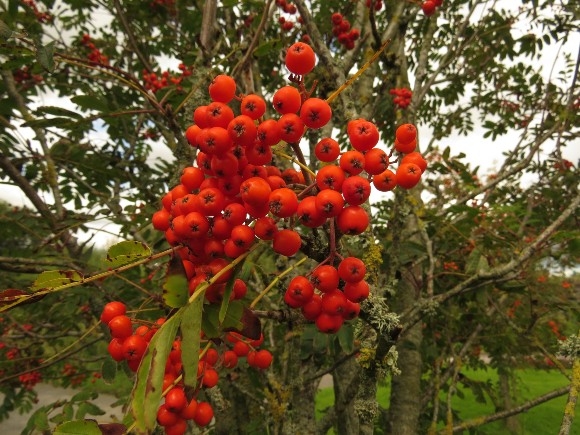
Apples
Carol’s Orchard has many varieties of apple trees, with fantastic names such as Merlin’s apple, Irish peach, Ellison’s Orange and Ashmead’s Kernel. Planted in 2011, these trees are now beginning to produce large amounts of fruit and it is lovely to see the growth of this orchard.Insects such as butterflies and wasps are attracted to the sweet fruit. Blackbirds and thrushes love to feed on apples and further into autumn, birds such as fieldfares and redwings arrive and feed up on them too! As the apples fall to the floor, they start to rot, going back into the ecosystem and in the past the Caerlaverock badgers have been seen getting a bit tipsy on the fermenting fruit!
Plums
The varieties of plums in the orchard include the blue tit plum, damson plum, Marjorie’s seedling and Oullin’s Golden Gage. The latter is an old plum, raised in France in 1856 and yellow in colour. It is a dessert plum, in contract with the blue tit plum which can be eaten straight from the tree, as well as cooked! The birds and insects are attracted to these fruits and although some are occasionally eaten by the staff and volunteers, most of the fruit from the orchard is left for the wildlife to enjoy!
